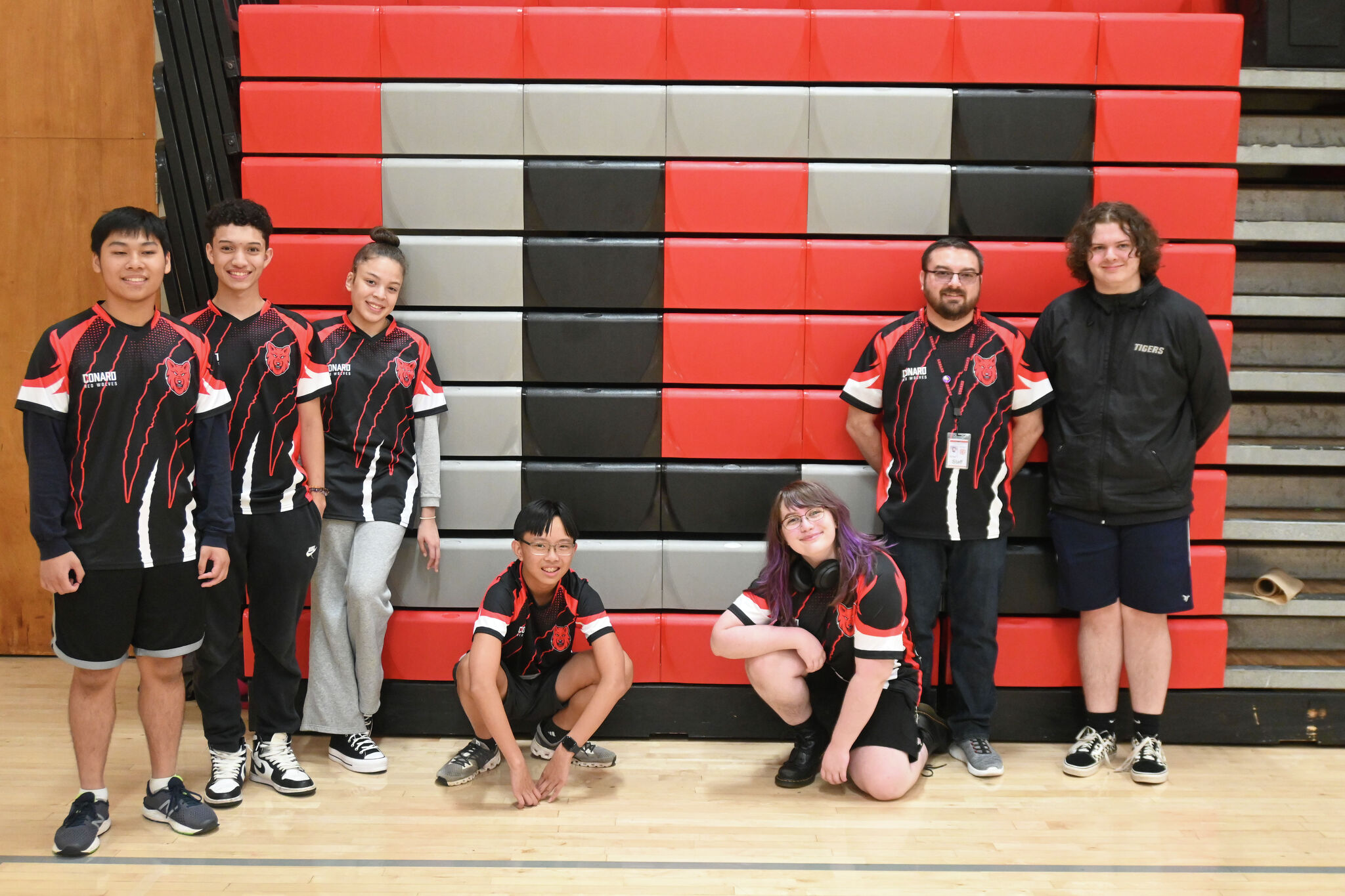rewrite this content and keep HTML tags
WEST HARTFORD — Conard’s esports team didn’t look like any other team at its school.
Two girls and four boys fill out coach Noah Mealy’s roster. And one of the gamers, Noah Malach, is Deaf.
Malach, who plays Splatoon and Super Smash Brothers, said he got an email about joining the team from Mealy and thought, ‘Why not?’
The fourth-year coach has welcomed anyone who’s interested in being a competitive gamer — a world where the Deaf and hearing and girls and boys can all don the same uniforms.
“Esports kind of lets us be on the same field,” Mealy said. “You can’t necessarily do that in sports. You don’t have teams with guys and girls usually or with physical disabilities. We can all play together and have fun together.”
Because the bare requisites to participate are skill and interest, esports appeals to a wider range of athletes. Yet, it still has some work to do to improve its overall inclusiveness, particularly for women and girls.
Clove Ryor, one of the girls on the team, said that esports resonated with her because she has an undisclosed disability that limits her opportunities to play other sports.
“For a lot of people, including me, we feel that we can’t really find a place in any other sport that can take us seriously and also be OK for us,” Ryor said. “We wouldn’t feel like we would be trying our best because we would have that aspect of ‘We’re not good at this; we know this.’ With e-sports, you have that encouragement to do better. It’s more encouraged, it’s more pushed just because of how accessible it is.”
Mealy has had athletes who play other sports and more academically-focused students who had previously not played sports on his teams, he said. He’s also had novices playing alongside veteran gamers.
There were nearly 227 million Americans who played video games in 2021, the Entertainment Software Association found in its research on the video game industry. Twenty percent of that group was under 18 and the majority — 38 percent — was 18-34.
Across all players from under 18 to over 65 years of age, 55 percent identified as male and 45 percent as female.
The fact that Ryor and her teammate Andrea Nicholson-Gauvin are a third of Conard’s team is no fluke — girls like gaming just about as much as boys and do it often. Audience research company GWI found that 79 percent of boys and 64 percent of girls worldwide played games most days or every day in 2021.
Although more girls are playing video games, esports is mostly male-dominated , social scientist Egil Trasti Rogstad of Nord University found in his literature review on esports. That’s mostly because esports are organized by men, for men, he noted.
Rogstad’s review also showed women frequently encountered general and sexual harassment from other players and often have limited access to communities through which they can develop their skills. Sometimes women in esports lack the network of friends to play with or males may refuse to play with females because “boys don’t like losing to girls” — hindering their growth.
Conard — where Ryor plays Splatoon with Malach and Nicholson-Gauvin, Super Smash Brothers with teammate Xavier Cabrera — paints a more unified picture of esports, one in which Ryor said she’s been able to grow.
University High esports head coach Andy Eaton had three girls on his team last year, but none this season on a roster of 46 players. For him, esports simply means more athletes.
“One of the best things of the program is that kids that normally aren’t playing [sports] can now have that title of student-athlete.”
